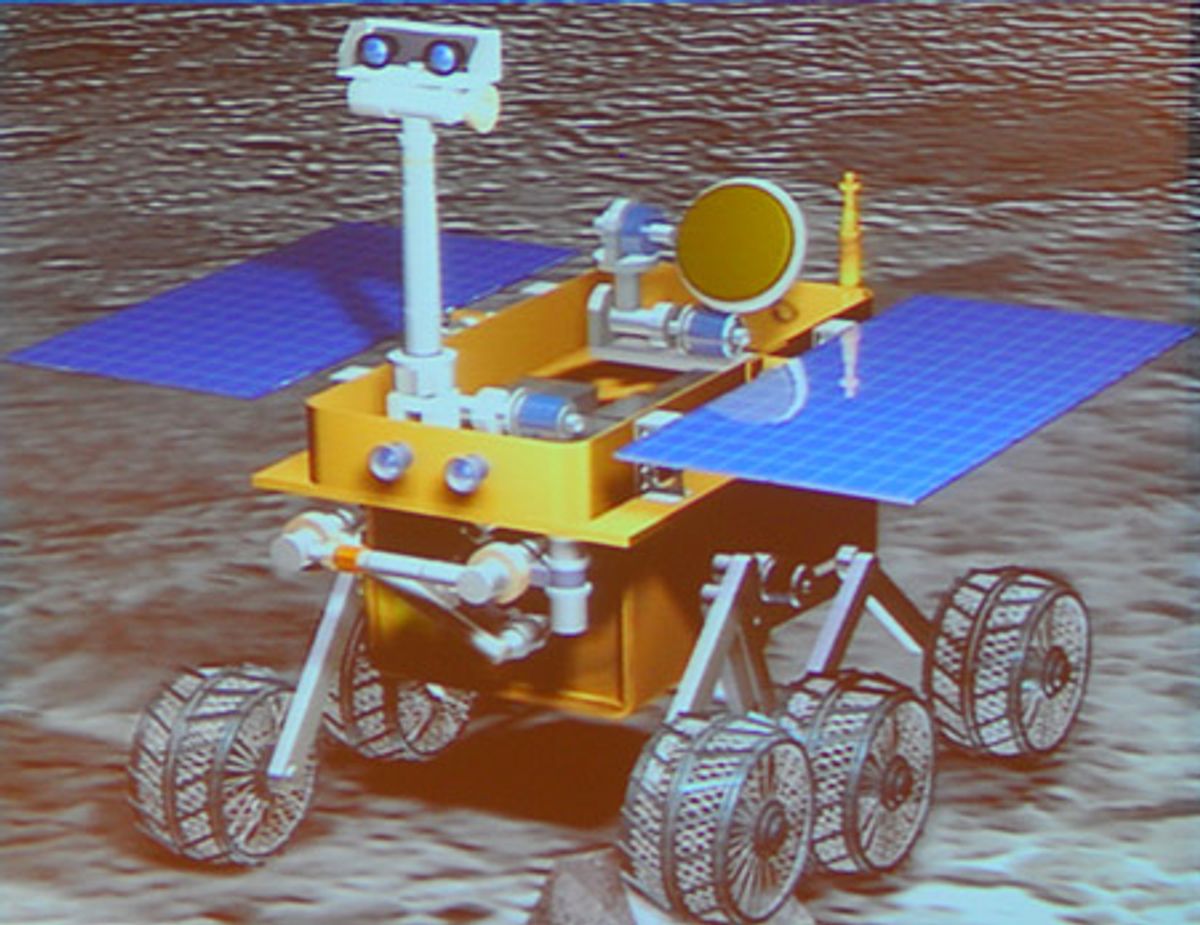Despite the fact that the moon is so close (cosmically speaking), we haven't really interacted much with the lunar surface since the late '70s. We've taken pictures of it and crashed the occasional spacecraft into it, but in general the moon has been bypassed for sexier planets like Mars.
The opening keynote at this year's IEEE International Conference on Robotics and Automation (ICRA), in Shanghai, was given by Ziyuan Ouyang, the chief scientist of China's lunar exploration program, which is quite possibly the most active lunar program in the world right now. Ouyang confirmed that, yes, China is planning to send robots to the moon, and he revealed interesting details about the project.
For the past four years, China has been engaged in a three-phase plan that will ultimately culminate in a lunar rover and a lunar sample return mission, scheduled to take place in 2013 and 2017 respectively. The first phase was the Chang'e-1 lunar orbiter, which was launched in 2007 and created multispectral maps of the surface of the moon while also using a laser altimeter to generate a high-resolution 3D map. In 2009, it was one of those aforementioned unlucky spacecraft that was deliberately smashed into the moon in the name of, um, science.
The next step was to send Chang'e-2 (which was originally backup hardware for Chang'e-1) to the moon to test out improved communications systems and pick a nice soft landing spot for a rover. Chang'e-2 launched late last year, and is still sending back data, having not been crashed into the moon (for science!) just yet.
Next will come Chang'e-3, which is scheduled to land in Sinus Iridium sometime “around 2013.” This will be the mission with an unmanned lunar lander and a 120-kilogram autonomous lunar rover, able to choose its own routes, avoid obstacles, and perform science experiments with a suite of sensors, including cameras, x-ray and infrared spectrometers, and a ground-penetrating radar. (See image above; all images are photos of slides presented during the talk.)
One of the (many) tricky parts of operating on the moon is designing a rover that can stay alive during the lunar night, which is a half-month long, making solar power an impracticality. To help keep itself alive, the Chinese rover will have a supplementary nuclear battery powered by plutonium 238, which will give the rover a lifespan of 30 years, although its mission life will be only three months. This is the same type of radioisotope thermoelectric generator system (RTG) being used on the Mars Science Laboratory rover, Curiosity.
And speaking of Mars rovers, here's what the Chinese rover will look like:
Looks familiar, huh?
This rover is only the second stage, though. The third and final stage involves landing on the moon, using either a robot arm or a drill to collect some samples, and then sticking those samples into a little rocket that flies itself back to Earth.
Beyond 2017, China hopes to eventually send humans to the moon, and they're also considering building a permanent lunar outpost.
Evan Ackerman is a senior editor at IEEE Spectrum. Since 2007, he has written over 6,000 articles on robotics and technology. He has a degree in Martian geology and is excellent at playing bagpipes.








